
Exciting new series on “Voice, Body and Movement for Lawyers – How to connect with the jury and find Justice Through Dramatic Technique!”
Click here to find out more
Nowhere is the gap between technology and regulation more pronounced than in AI. For lawyers, this often means navigating ethical risks without clear guidance. But staying current with AI tools isn't just useful—it’s a professional obligation. Understanding how AI intersects with legal ethics is essential, but recognizing risks like bias, opacity, or overreliance is not the same as knowing how to navigate them in practice.
This program, jointly presented by a lawyer and a software engineer, moves beyond theory to focus on practical solutions. It demystifies the processes behind AI and connects those mechanics directly to lawyers’ ethical duties, offering concrete strategies for responsible use.
By the end of the session, participants will be able to:
1. Understand the origin of potential ethical hazards in an AI tool
2. Identify potential ethical hazards in the use of AI in a law practice (applying Model Rules 1.1, 1.4[b], 1.5[a], 1.6[c], 5.1, 5.2, 5.4)
3. Evaluate risk mitigation strategies
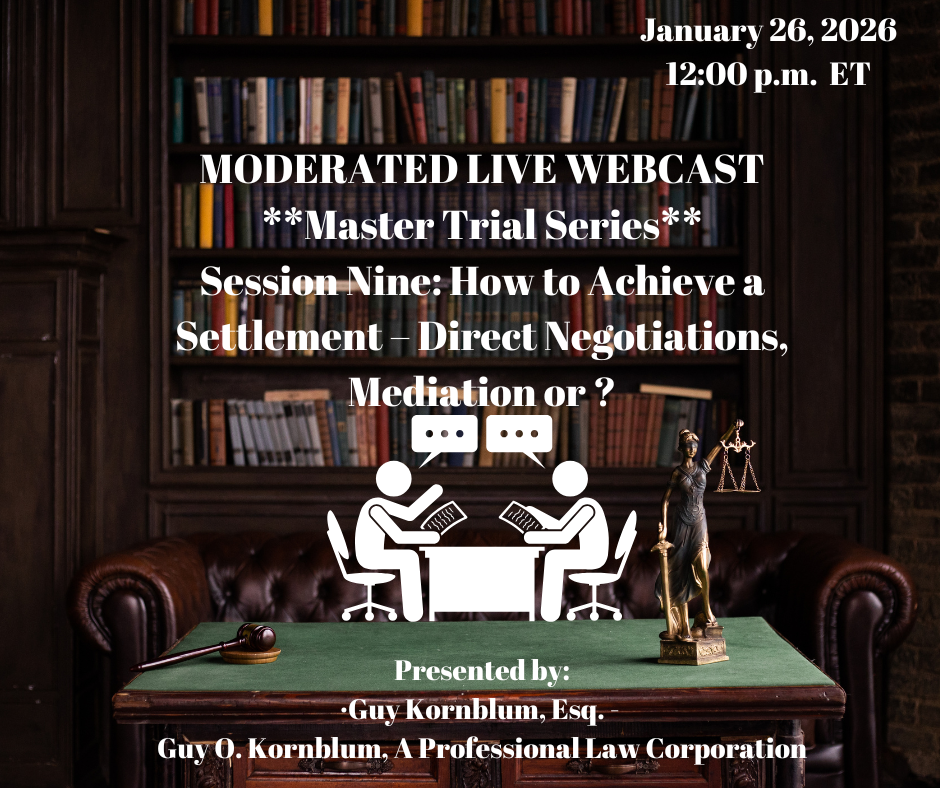
MODERATED-Session 9 of 10 - Mr. Kornblum, a highly experienced trial and litigation lawyer for over ...
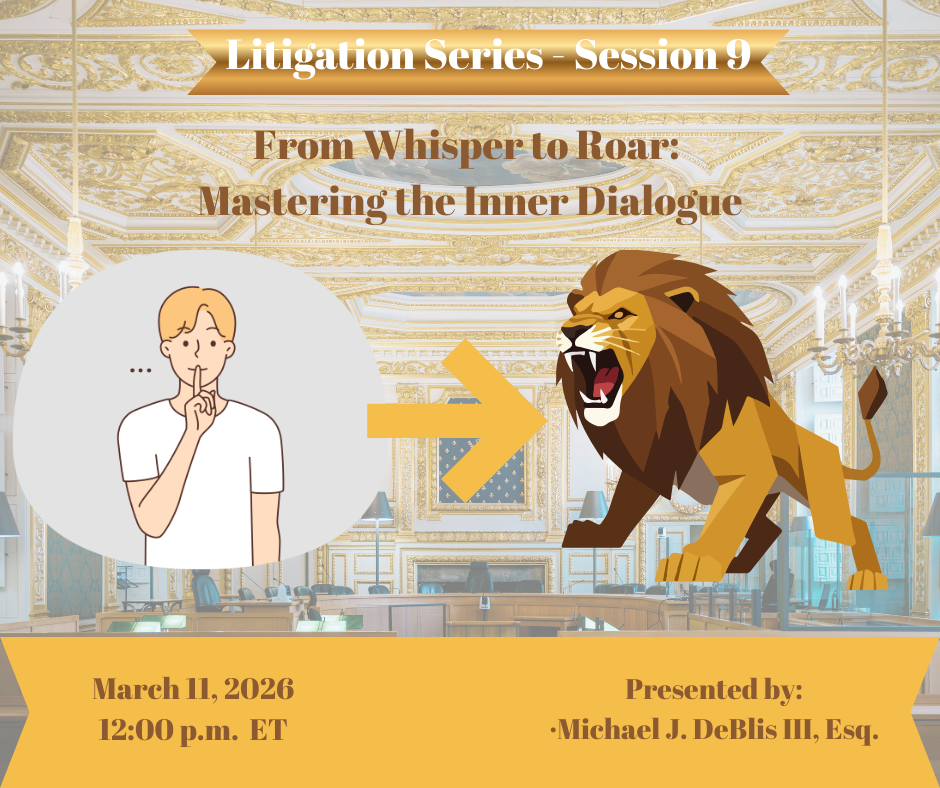
This program focuses on overcoming the inner critic—the perfectionist, self?doubting voice tha...

MODERATED-This course is designed to inform patent practitioners on the bounds of the Hatch-Waxman S...
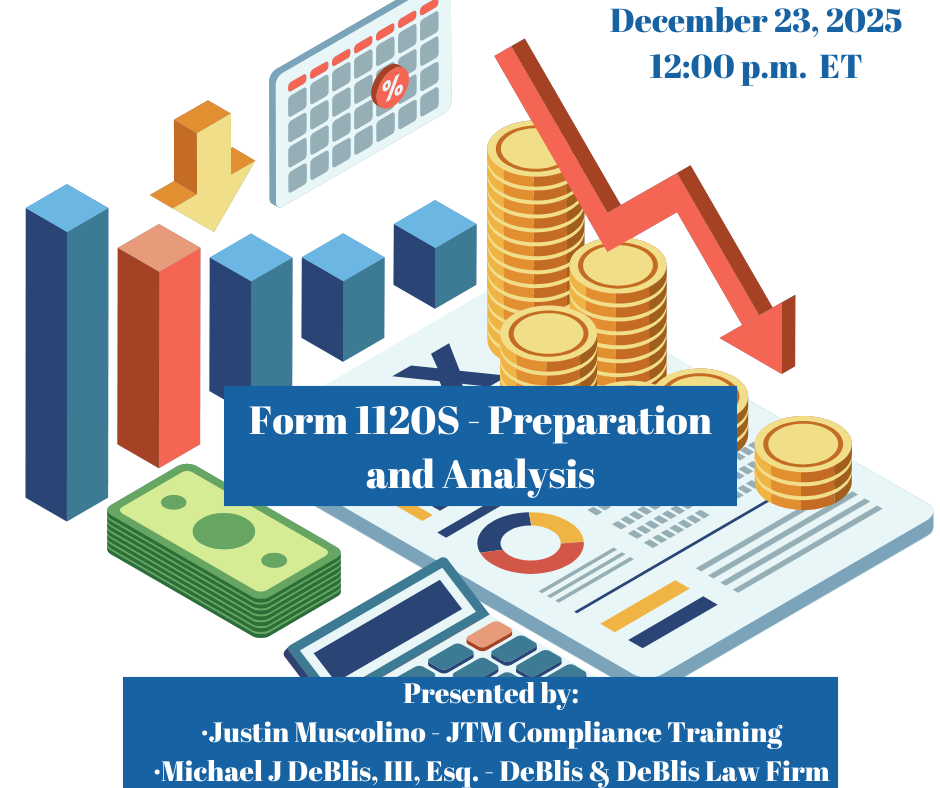
This course provides attorneys with a detailed examination of Form 1120S, including legal considerat...
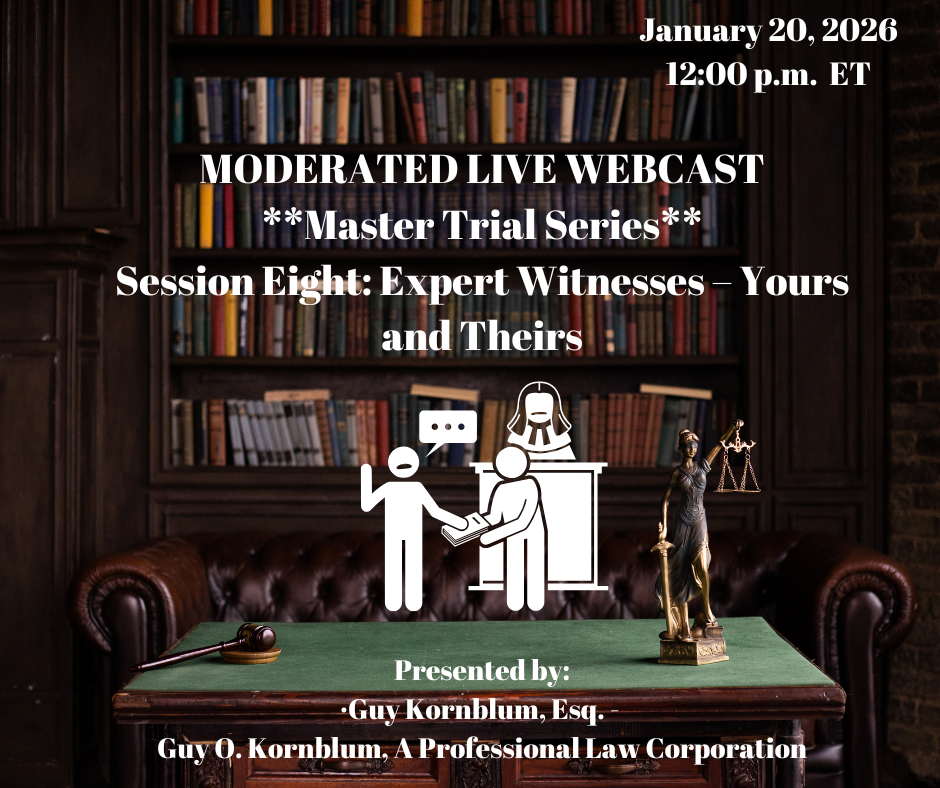
MODERATED-Session 8 of 10 -Mr. Kornblum, a highly experienced trial and litigation lawyer for over 5...
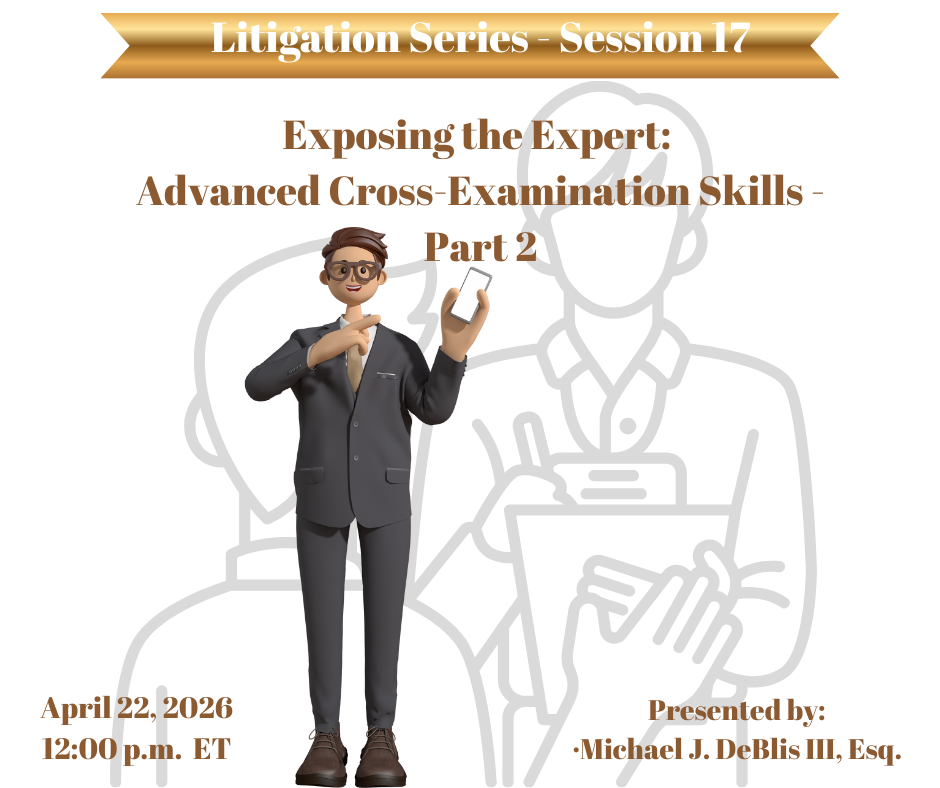
Part 2 - This program will continue the discussion from Part 1 focusing specifically on cross?examin...
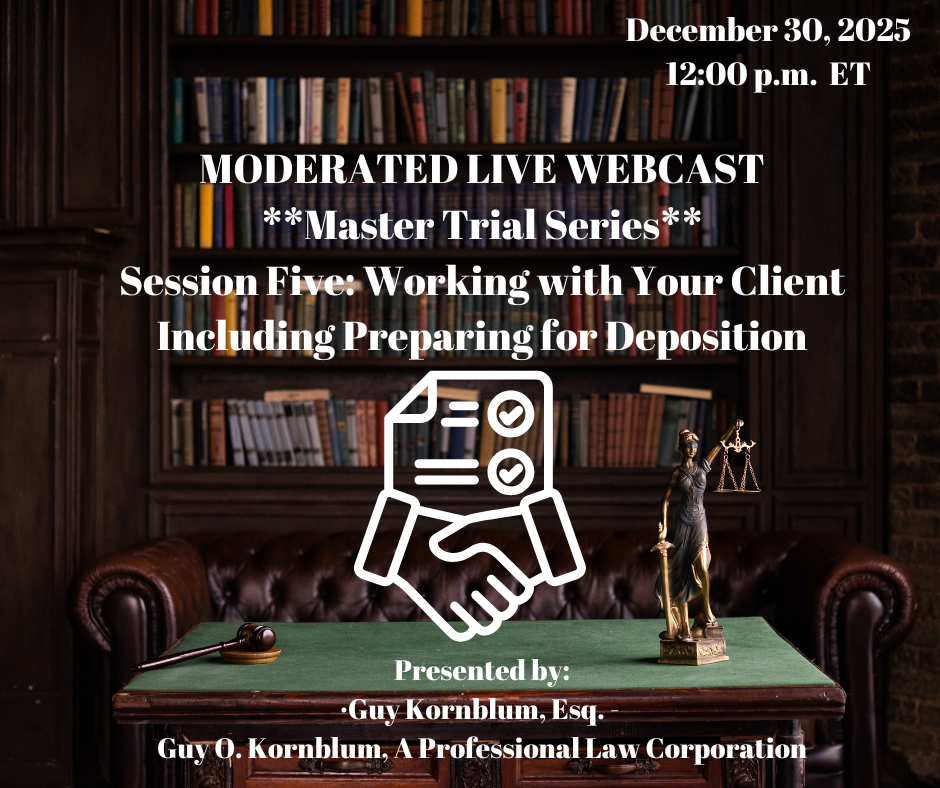
MODERATED-Session 5 of 10 - Mr. Kornblum, a highly experienced trial and litigation lawyer for over ...
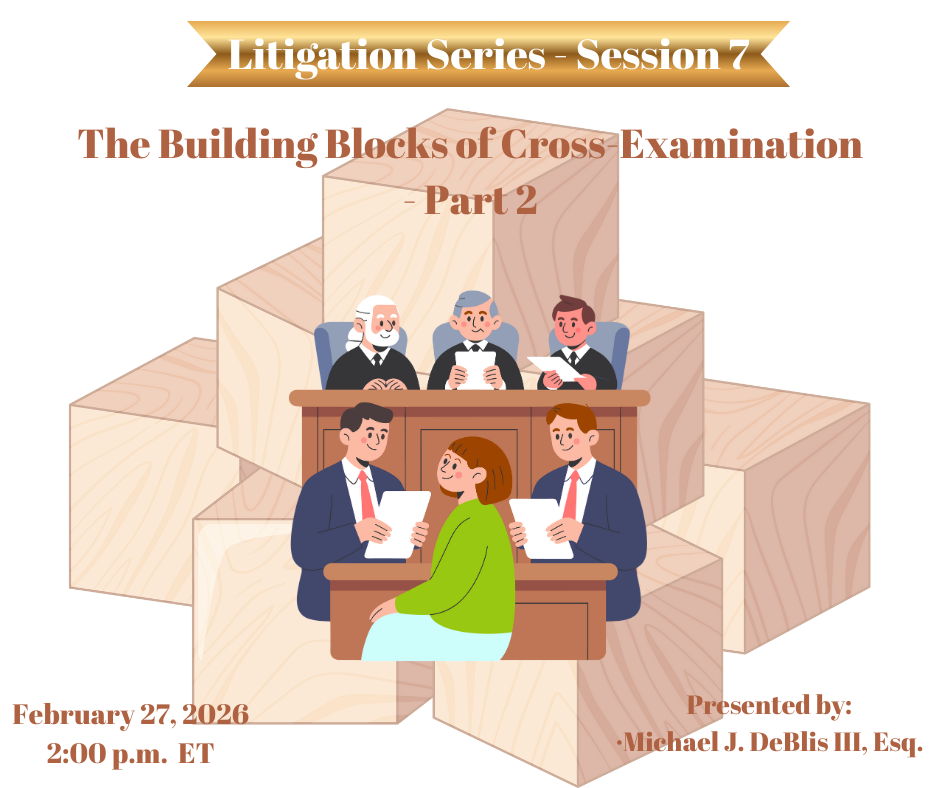
Part 2 dives deeper into advanced cross?examination techniques, teaching attorneys how to maintain c...
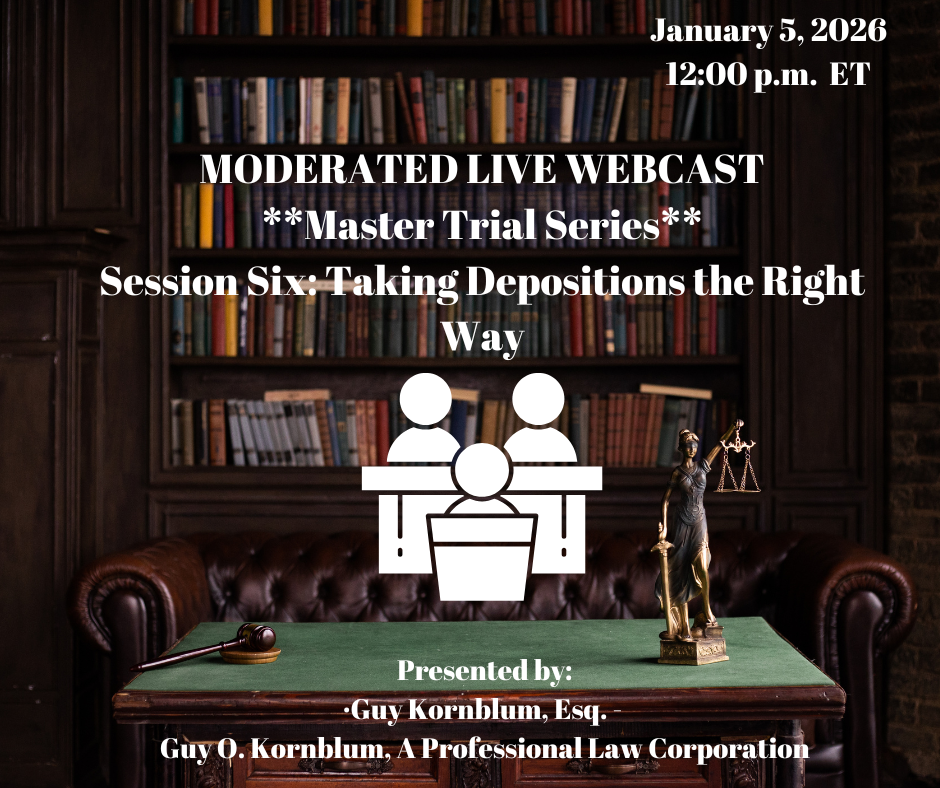
MODERATED-Session 6 of 10 - Mr. Kornblum, a highly experienced trial and litigation lawyer for over ...

Part 1 of 2 - Lawyers at all levels of experience and even sophisticated law firms and general couns...